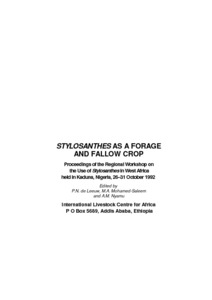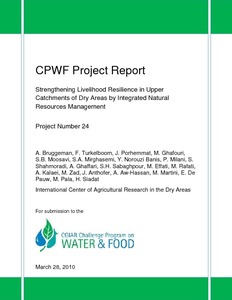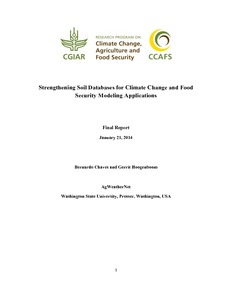parcours
AGROVOC URI:
Spatial analysis for investment targeting: Pilot tool
Soil microbial biomass in semi-arid-communal sandy rangelands in the Western Bophirima district, South Africa
Soil microbial biomass is considered as an important early indicator of changes that may occur
in the long term with regard to soil fertility and constitutes an important source and sink of nutrients. In
South Africa, rangeland monitoring has mostly focused on assessing changes of aboveground vegetation
in response to land uses effects, but the associated changes at belowground soil level remain a topic of
further research. The aim of this study was to explore soil microbial biomass at three sites under
State of Climate Change Adaptation and Mitigation Efforts for Agriculture in Bhutan
Bhutan is least developed, mountainous and landlocked country in the eastern Himalayan range with a population of over 600,000. However its population and ecosystems are vulnerable to climate change. Despite a high level of environmental protection and awareness, Bhutan has become a victim of the global impacts of climate change caused by emissions in other countries. There is little historical climate data available in Bhutan; current records date back only to 1994. Consequently, the future climate scenario for Bhutan is uncertain.
Spatial and temporal contrasts in the distribution of crops and pastures across Amazonia: a new agricultural land-use dataset from census data since 1950
Soil organic carbon dynamics, functions and management in West African agro-ecosystems
Spatial correlates of land-use changes in the Maasai-Steppe of Tanzania: Implications for conservation and environmental planning
Spatially explicit models are becoming increasingly important tools for simulating land-use change. In this study, we formulated and tested models that incorporated spatial correlates of agricultural expansion and used them to predict local- and landscape-scale patterns of agricultural land-use change and its implications in the Maasai-Steppe of Northern Tanzania. We evaluated the relationship between agricultural land-use and its spatial correlates using Multiple Logistic Regression on data derived from satellite imageries for the year 2000.
Stylosanthes as a forage and fallow crop. Proceedings of a regional workshop on the use of Stylosanthes in West Africa
This report is divided into seven sections. The first section deals with biology of Stylosanthes and its importance in West Africa and Latin America. The second section presents papers on the screening and evaluation of Stylosanthes germplasm. This includes genetic diversity, genetic resources, species screening, multi-locational testing and evaluation of accessions. The third part discusses the dynamics, nutrient requirements, and pests and diseases of Stylosanthes species. Section four looks at Stylosanthes-based pastures for livestock production.
Strengthening livelihood resilience in upper catchments of dry areas by integrated natural resources management
The Livelihood Resilience project evolved around the hypothesis that better integrated
management can improve the livelihoods of poor farming communities and increase the
environmental integrity and water productivity of upstream watersheds in dry areas. This
hypothesis was tested by researchers from different Iranian research and executive organizations
and farming communities in two benchmark research watersheds in upper Karkheh River Basin in
Iran, under the guidance of the ICARDA scientists. Participatory technology development, water,
Summary of baseline household survey results: Borana, Ethiopia
Strengthening Soil Databases for Climate Change and Food Security Modeling Applications
Climate change is a hazard to the food security of a growing world population since it affects agriculture and likewise, agriculture and natural resource management affect the climate system. The relationships between all these factors including polices, political conditions, economical management and pest and diseases, and how they interact are not currently well-understood, nor are the advantages and disadvantages of different responses to climate change.












